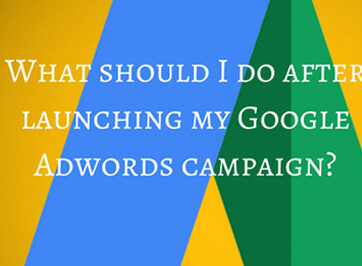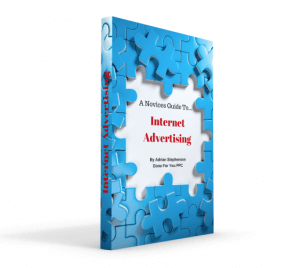In the beginning…
I often get asked the question “should I do PPC?” by business owners. And just to be clear, PPC stands for ‘pay per click’ – a form of online marketing usually associated with Google Adwords.
Let’s wind the clock back 20 years. How did businesses attract more customers in those days? The answer of course is Yellow Pages!
Back then, virtually every business that wanted to get more customers did so by advertising in the Yellow Pages directories.
Adverts came in a variety of shapes and sizes, and even multi-coloured ones if your business was particularly well-heeled. Size mattered in the late 20th century!
But, of course, there was a problem. Namely that the directories were produced annually, so that you were stuck with whatever was printed when you signed off the ad. New products or services, changes of address and (ironically) phone numbers had to wait until the following year’s publication.
Each year the Yellow Pages representative visited you and encouraged you to spend more money on bigger ads and expand into more areas of their directory.
That said, it was not for everyone, and there were cheapskates who went for the one-line free listings. Why would anyone call you if they had no idea about your business other than the subject line of the listing?
It may have worked if you were the only taxidermist in town, but not if there was a smattering of serious competitors.
Remember, it was not just Yellow Pages; there was Thompson Local too – just a smaller, and slightly cheaper, version of the same thing.
It’s all changed…
Jump back to the present and the adverts in Yellow Pages have now turned into websites. Yellow Pages has morphed into Google, and Thompson Local is the equivalent of Bing.
With this has come the flexibility of change. So, if your business has expanded into new markets, or if you’ve moved premises recently, with a few clicks and possibly a chat with your web designer, this information can be quickly communicated to the outside world.
There’s no more thumbing through page after page of small font printed on 40 gram paper, trying to work out which business will best solve your problem, based on what they’ve been able to tell you in a 5 x 3cm box. These days if people want something they ‘Google’ it.
That is how they find your site….Or do they?
What happens if it’s lurking on page 3, or even page 33, of the search results?
Google is huge. It’s like all of the Yellow Pages area books bundled into one massive directory. Imagine how difficult it would have been to be found in such a vast document.
From the buyer’s point of view, it’s all about finding a solution to a problem, but from the seller’s perspective it’s all about being found.
Remember those one-line Yellow Pages free listings? They were only any use if an existing customer wanted your phone number and didn’t have a conventional telephone directory, let alone a mobile phone, to hand.
In the Internet world that we live in it’s exactly the same for your website. People who already know about your business will google its name to get your contact details. But what about those who have never heard of you?
Unless you have an active SEO strategy and are running PPC campaigns, your site will float around in a sea of anonymous digital media, always being one of the 1,280,000 results that Google found in 0.34 seconds, but never the one that got seen by the person who urgently needed your product or service!
There’s no such thing as a free lunch…
Oops, I mentioned SEO. What’s that all about?
For the uninitiated, it stands for Search Engine Optimisation, and is the method used by website owners (or their paidSEO specialists) for getting their site listed as highly as possible in the organic/free listings on Google or other similar search engines.
Without getting completely side-tracked into explaining the ins and outs of SEO, it can be summarised as being the alternative route to being found on the web.
Typically it is slow to produce results, restricted to a few keywords, can be highly expensive, virtually impossible to measure, and subject to algorithm changes etc. So, whilst it should always be part of your business overall marketing plan, it can’t be completely relied upon.
Therefore the only way to really guarantee being shown at the top of the search engine results is by doing PPC.
Which is exactly what I explain to people when they ask me the “should I do PPC?”question.
However, being shown in the top branches of the Google tree is one thing. Making it profitable is another.
What is possible?
So, where is the starting point to finding out whether Adwords can provide a positive return on investment for your business?
This requires some data, as well as knowing your business figures.
Rewind to the days of Yellow Pages again, and it was a relatively simple equation. They would charge you £x for your advert, so it was up to you to make sure you turned enough enquiries into sales that in turn left a profit in excess of your advertising costs.
Of course it was very difficult to attribute sales down to Yellow Pages as there was no form of tracking, but that’s another story.
Fortunately these days, with digital marketing, it is much easier to track success.
A simple example might help to paint the picture of where to start.
Imagine (if necessary) you own a business that knows its averages: the average length of time that customers remain as customers (ie they continue to buy from you), the average value of sales, the average lifetime value of a new customer.
Let’s say that a new customer is ‘worth’ £500 per annum to your business (ie they buy goods/services that have a gross profit of £500 each year).
Now, if you could go to a shop that sold customers worth £500pa to you, how much would you be prepared to pay for one?
Obviously you’d still be in profit if you paid £499, but you’d need to buy a lot of customers to make any money, and that’s before you look at the cost of your overheads!
So, more realistically, you decide that it’s worth paying up to 10% of the value of a new customer. In this case that’s £50.
Another important statistic to know is your conversion rate of enquiries to sales. On average, how many enquiries turn into sales? Perhaps only 10%.
Armed with this information it’s easy enough to work out that if 1 in 10 enquiries turn out to be sales, and you can afford to pay £50 for each sale, then each enquiry should cost no more than £5.
Now you know your ‘cost per acquisition’, which is a critical figure when it comes to PPC.
The final piece of the jigsaw is to understand how many clicks on average lead to enquiries.
If you know that for every 25 clicks on your ads, one enquiry is generated, then you can afford to pay up to £0.20 per click (ie 25 x £0.20 = £5.00).
Can you see that this is less of a guessing game than you might have thought?
It’s not all about ads and bids…
Adwords is a very data driven form of marketing, so knowing your figures is really important in achieving profitable results.
But the other key factor in achieving success is having a website, or specific landing pages (ie the page that the user lands on when they click your ad) that generate enquiries.
Google searchers are generally not little old ladies who have all day to browse around your site, looking for the best price on crochet needles. Instead they are busy people who want to be fed information quickly and easily.
This means having clear headings, simple to scan-read text, prominent contact details, calls to action and appropriate images of ‘real’ (ie not stock) people. Adding in some genuine testimonials and keeping distractions to a minimum will further help your cause.
To bid, or not to bid…
As with any form of business marketing, it’s best to have a plan that can be adapted as you learn more about your target market.
Google’s advertising for Adwords can be alluring, and you could be forgiven for thinking that it’s easy to set up and will bring in a ton of new business within days.
That’s a fallacy. In reality it can take months to get it ‘right’, namely the point where you know that for every £100 you pay for clicks, you’re getting 3, 4 or more times that back in profits.
The early weeks/months of a new Adwords campaign are very much about data gathering, and this has financial implications. To begin with you will almost certainly be paying more to Google than it will be paying you back in sales.
If your business wouldn’t survive if the first 3 months of PPC produced no worthwhile sales, then it’s probably not ready to embark on a major campaign just yet.
Don’t get me wrong, PPC is a very successful form of advertising when done well, and for many businesses represents virtually 100% of their marketing budget.
However, it’s not like the old days when the Yellow Pages rep would waste 30 minutes of your time in return for a signature on a direct debit mandate, and that was your advertising sorted for another year.
PPC requires thought, planning and patience. Underneath the Adwords ‘bonnet’ are a myriad of variables with which to tune your campaigns, plus some seriously useful reporting features that help to slice and dice the data.
Don’t forget that Google only earns money from paid advertising, so there are a few trip wires to beware of. Although, in fairness, their encyclopaedia-like help section covers most eventualities, as long as you’ve got the time to find the missing needle.
So, should you do PPC?
Quite possibly, but seek professional advice as to its feasibility for your target market. And, whatever you do, don’t work with an agency that is more interested in getting your signature on a direct debit mandate than finding out about you, your business, your expectations and above all, your figures.





